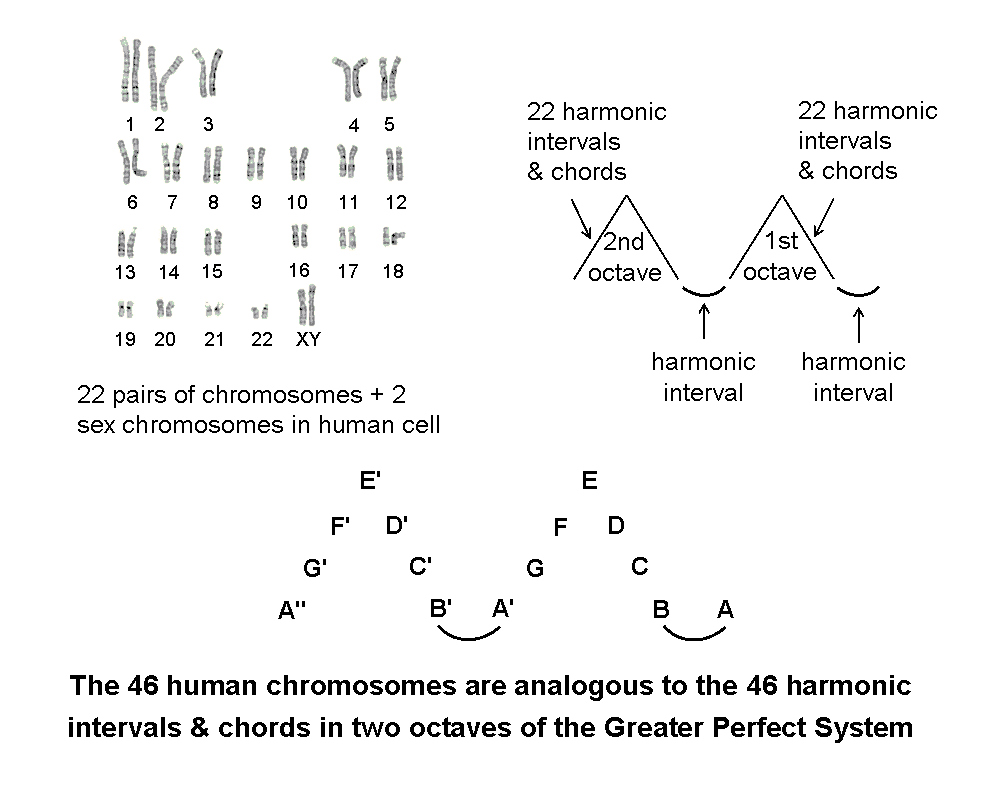
| << Previous 1... 22 23 [24] 25 26 ...45 Next >> |

The 61 sounds of the Greater Perfect System comprise its 15 notes and 46 potential sounds playable with them. Each octave has 23 sounds, of which 22 are harmonic intervals/chords playable in the two conjoint tetrachords and one is the harmonic interval (A-B or A′-B′) playable with notes connecting disjoint tetrachords. Compare this with the 46 chromosomes making up the nucleus of a human cell. They comprise 22 pairs (autosomes) and a pair of X or Y sex chromosomes. The analogy between the two systems is clear, with the two special harmonic intervals AB & A′B′ that start each octave corresponding to X and Y. To every type of human chromosome there corresponds a unique sound that is either two, three or four notes played together. As one member of each pair of chromosomes is inherited from each parent, the two octaves are the musical parents, each of which contributes 23 sounds.
Species other than Homo Sapiens whose cells have 46 types of chromosomes include:
- Reeves's muntjac (Muntiacus reevesi);
- Black rat (Rattus rattus), but not all of them have 46;
- European hare (Lepus europeus);
- Merriam’s ground squirrel (Spermophilus canus);
- Southern short-tailed shrew (Blarina carolinensis);
- Mountain beaver (Aplodontia rufa);
- Beach vole (Microtus breweri);
- Nilgai (Boselaphus tragocamelus);
- Kirk’s dik-dik (Rhynchotragus kirki);
- Grey vole (Microtus arvalis).
| << Previous 1... 22 23 [24] 25 26 ...45 Next >> |